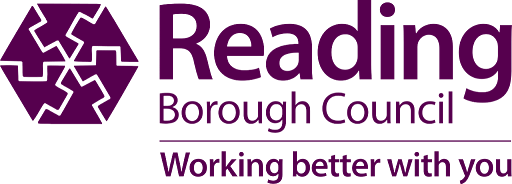New Town Hall Café Name Announced!
The Pantry Cafe and Kitchen
THE NEW name of Reading Town Hall’s café has been announced this week.
The former 3Bs Café which is currently undergoing a complete refurbishment, has today been revealed as ‘The Pantry Café and Kitchen.’ ‘The Pantry’ is a historical nod to the popular People’s Pantry restaurant that once stood opposite the town hall. The People’s Pantry in Market Arcade on Friar Street was one of the town’s ‘British Restaurants’ set up as Emergency Feeding Centres during the Second World War to offer cheap meals to help supplement rationed food. The original Peoples Pantry in 1945 two years after it reopened © Reading Museum/Reading Council It was destroyed on 10th February 1943, when a lone German plane dropped four 500 kg bombs in Reading town centre. The announcement of the new café name comes the same week as the anniversary of the bombing, where 41 people lost their lives and many were injured.Cllr Sarah Hacker, Reading’s Lead Member for Cultural, Heritage and Recreation, said:
“I’m delighted to announce the new name of the Town Hall's new café as ‘The Pantry Café and Kitchen’ and I’m very much looking forward to enjoying the café when it opens later this spring, alongside the new Story of Reading gallery at Reading Museum and the transformed town hall reception and museum shop. “We considered several names with historical connections, but ‘The Pantry,’ proved the most popular choice. It is poignant that the announcement comes during the same week as the anniversary of The People’s Pantry bombing. “We also want the name of the café to celebrate the positive historical connotation of a much loved, popular meeting place in Reading during a challenging time for the town. The People’s Pantry was a wartime institution designed to provide quick and satisfying meals for shoppers, business people, artisans and the army forces. The new café will hopefully prove as popular a destination for residents and visitors.” As well as the re-opening of the 3Bs Café, the big changes completing in 2019 include: • The reconfiguration of the reception desk area; • The completion of the new Story of Reading gallery; • The creation of a new museum shop. The work is designed to minimise disruption to visitors and staff as far as possible and both the Town Hall and Museum are open for visitors as usual. The investment at the town hall links to the wider regeneration of the Abbey Quarter, including the newly re-opened Abbey Ruins and improved information points across the town centre. It is also part of Reading Council’s drive to make the best possible use of its buildings.Ends
Notes
The history of the original People’s Pantry
The bombs fell in a line from the north bank of the Kennet to just outside the Town Hall. The first bomb hit Simmonds Brewery and exploded leaving a 25 ft crater near a paint store. The second passed through the offices of the Labour Party on the south side of Minster Street before exploding in the restaurant of Welsteeds department store across the road. Falling a few moments later the aircraft’s third bomb collapsed part of the Victorian arcade linking Broad St and Friar St before exploding in a yard outside the People’s Pantry in Friar St, one of the town’s ‘British Restaurants’ set up as Emergency Feeding Centres and to offer cheap meals to help supplement rationed food. As Wednesday was half-day closing at the Pantry the number of casualties was less than it could have been on another day. Paddington Bear author Michael Bond, was installing a radio transmitter on top of the People’s Pantry at the time. The final bomb passed through the top of the People’s Pantry building and detonated a few feet from the south tower of the town hall, bringing down the front of Blandy and Blandy’s solicitors, damaging St Laurence’s Church and severely damaging the Town Hall itself, which was the control centre for Civil Defence in the town. As the bomber flew off the crew machine gunned the town, injuring a woman in Hemdean Road, Caversham and damaging a school. Tragically, only 37 of those among the dead and injured were identified, the youngest being two 10-year-old children. Find out more by reading The Day Reading was Bombed Blog – by Mike Cooper on Reading Museum’s Blog Pages www.readingmuseum.org.uk/blog